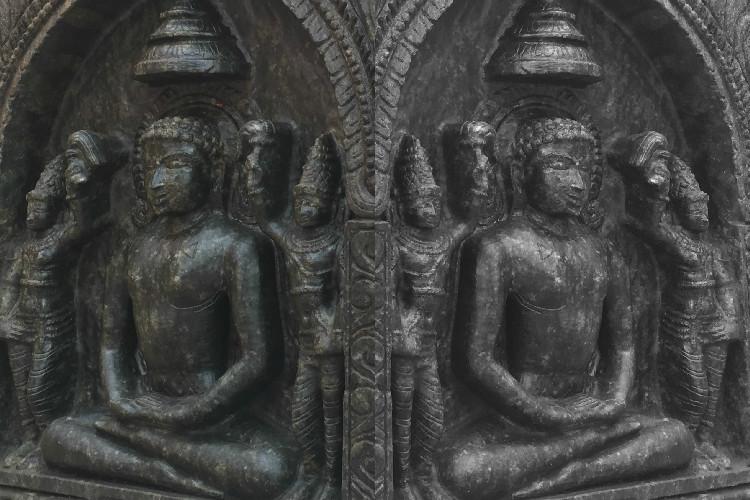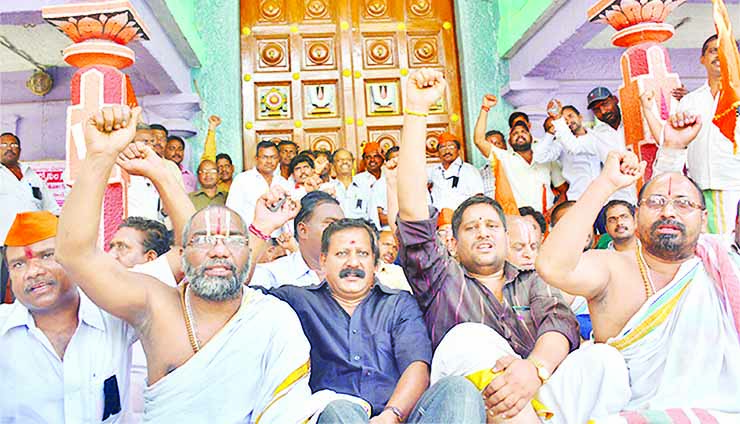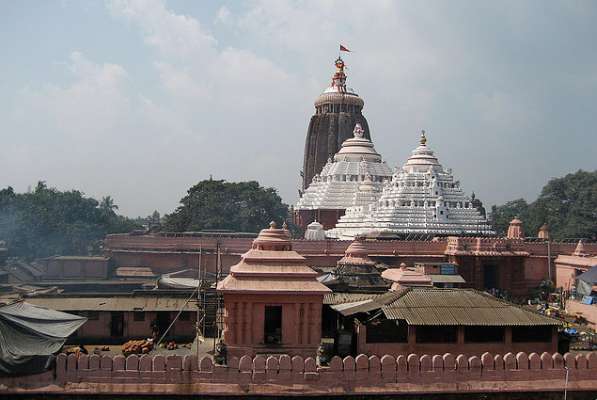Restoration after 100 years at Thothadri Nathan Divyadesam | The Hindu
It is the final leg of Venu Srinivasan’s 11 Divya Desams restoration initiative around Tirunelveli that he began way back in the 1990s with Erettai Tirupathi, a temple that was lying in a state of disrepair.
Today, the entire Nava Tirupathi region is flourishing with the temple personnel having seen a revival in their fortunes. Twentyfive years after his first temple restoration, he is now supporting the Thothadri Nathan Divya Desam, administered by Vanamamalai Mutt.
Praised by Nammazhwar restoration is taking place after more than a century at this Divyadesam in Nanguneri. The previous Samprokshanam was performed in 1910.
Inscriptions dating back to the 13th century AD provide insights into a few of the festivals. Grants were given to conduct the abishekam for the deity on Adi Pooram, celebration of a special festival on Moolam and another one on the Uttiram day in Chitrai.
The speciality of this Divya Desam is the daily oil abishekam for the moolavar. The oil, which is believed to have medicinal values, is then deposited into the ‘oil well’ inside the temple. Another feature seen inside the temple sanctum is the statues of Urvasi and Thilothama, who undertook penance at Thothadri seeking liberation from re-birth. They are seen in the posture of fanning the Lord.
When Venu Srinivasan visited this historical temple with his team as part of his pre-restoration exercise, he found new structures inside the temple — for instance, a number of walls that were built in the past hundred years for no good reason.
A large part of the restoration exercise therefore involved removing unwanted structures, which were neither historical nor added architectural value.
The entrance to the temple, including the Chariot Mandapam and the long pathway to the Raja Gopuram, had a forlorn look. New constructions had posed an obstruction to free movement. It also prevented natural light from entering the temple. Result: many areas inside the temple were completely dark and the prakaram had turned into a den for bats.
The Vasantha Mandapam was seen with modern modifications and had to be conserved and its historical importancebe brought back. The sacred well was surrounded by walls and new additions. There was no free outlet for the abishekam water and the rain water too stagnated inside the temple.
A complete makeover
Over the past 12-18 months, one has seen a complete transformation of the temple much on the lines of the restoration at Sri Ranganathaswamy Temple, Srirangam.
Huge debris from the prakaram, especially around the Vasantha Mandapam and nandavanam have been removed. Restoration of Vasantha Mandapam back to its ancient stone structure is one of the big highlights of this exercise.
The nandavanam that has tall coconut trees now wears a fresh look with a lot of open spaces that will make for a cool trip for the Lord during the Vasantha Utsavam every Vaikasi. There are plants tht will yield flowers for the daily puja and festivals.
With the removal of the new constructions one is now welcomed into the temple by a number of pillars standing tall amidst the long pathway leading to the Raja Gopuram.
Rain and waste water drainage management has been another important initiative undertaken as part of this exercise whereby the water is now led out of the temple into the nearby pond.
The Yagasalai is now improved with better ventilation and lighting. The damaged staircase to the Moolai Garudan has also been restored. Safety grills have been installed for the utsava mandapams.
Refurbished gopuram
The Raja Gopuram looked faded just a few years ago with some of the sculptures on it looking dilapidated. After sprucing up, the gopuram sports a new look with a fresh coat of painting and sculptures restored to their original sheen.
The sacred well was another area inside the temple complex where new structures had come up.
These have been removed and the space around the entire area has been restored. It has been a long wait of over a century for the repair works to be undertaken at the temple but going by the quality of the restoration it has been worth the wait.
Samprokshanam is slated for June (Aani) after the important Utsavams in Panguni, Chitrai and Vaikasi.
A fulfilling experience
‘It has been a highly fulfilling experience to be involved in the restoration of Divya Desams in the Tirunelveli region and to be able to revive heritage structures from a state of dilapidation. The feedback from the devotees of having felt positive vibrations while at these temples after the restoration is the real blessing that one could get at the end of such large restorations’ – Venu Srinivasan
Nammazhwar on Vanamamalai Temple
In his Tiruvoimozhi praise, Nammazhwar indicates the prosperity of the people as is seen from his reference to the presence of tall mansions. He found red lotuses, sugarcane, mango groves and paddy in abundance. Repeatedly he refers to this place as being home to great Vedic seers who chanted, non-stop, the sacred verses.
Returnt to the ancestral home
A welcome sign at this Divya Desam is the return of those who were once the inhabitants of the agraharam. A few families have returned to their ancestral homes and many are coming back to be a part of the utsavams held through the year. It is hoped that soon the entire agraharam will regain its lost glory with the return of the families that had made this one of the most vibrant agraharams among Divya Desams in Tamil Nadu.











